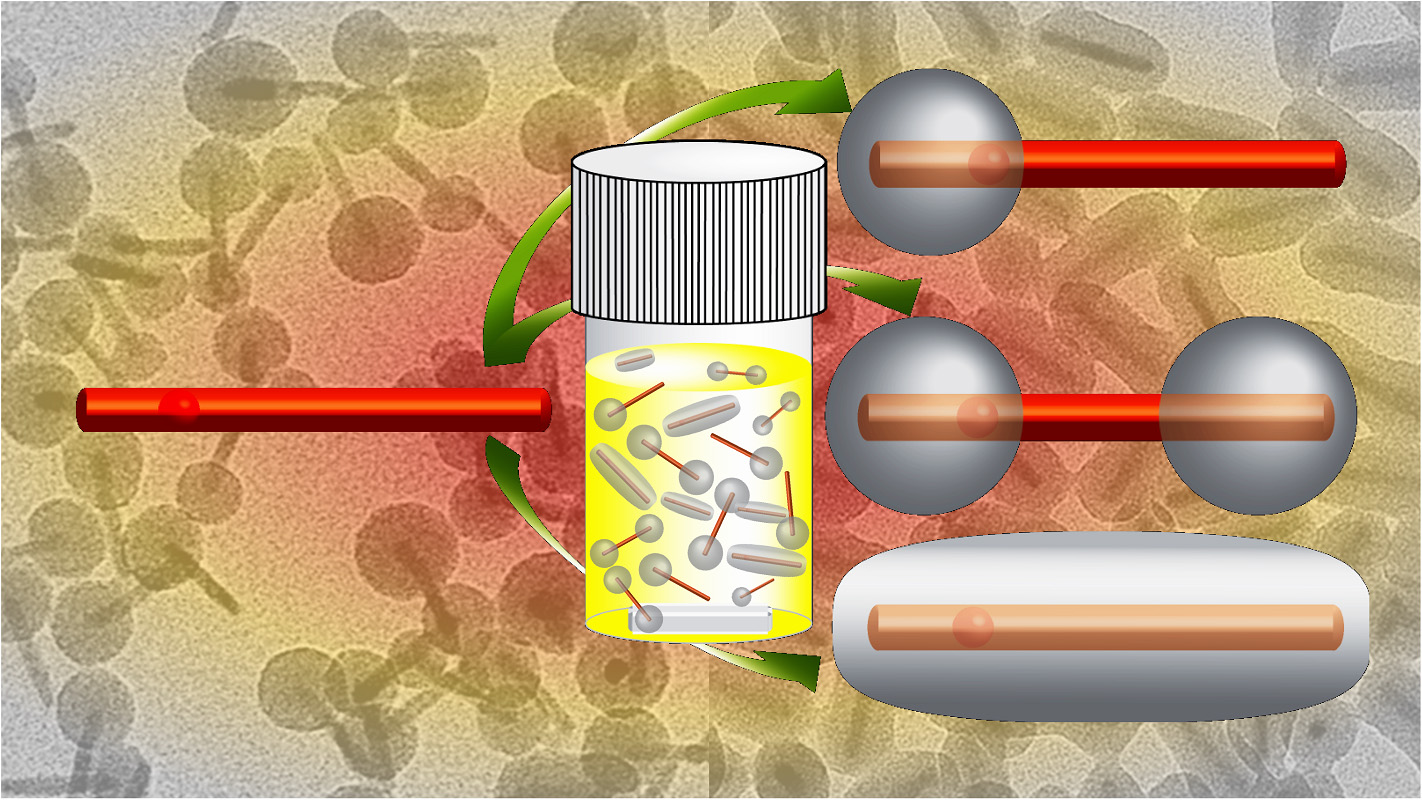Researchers Develop Faster, Precise Silica Coating Process for Quantum Dot Nanorods

For Immediate Release
Materials researchers at North Carolina State University have fine-tuned a technique that enables them to apply precisely controlled silica coatings to quantum dot nanorods in a day – up to 21 times faster than previous methods. In addition to saving time, the advance means the quantum dots are less likely to degrade, preserving their advantageous optical properties.
Quantum dots are nanoscale semiconductor materials whose small size cause them to have electron energy levels that differ from larger-scale versions of the same material. By controlling the size of the quantum dots, researchers can control the relevant energy levels – and those energy levels give quantum dots novel optical properties. These characteristics make quantum dots promising for applications such as opto-electronics and display technologies.
But quantum dots are surrounded by ligands, which are organic molecules that are sensitive to heat. If the ligands are damaged, the optical properties of the quantum dots suffer.
“We wanted to coat the rod-shaped quantum dots with silica to preserve their chemical and optical properties,” says Bryan Anderson, a former Ph.D. student at NC State who is lead author of a paper on the work. “However, coating quantum dot nanorods in a precise way poses challenges of its own.”
Previous work by other research teams has used water and ammonia in solution to facilitate coating quantum dot nanorods with silica. However, those techniques did not independently control the amounts of water and ammonia used in the process.
By independently controlling the amounts of water and ammonia used, the NC State researchers were able to match or exceed the precision of silica coatings achieved by previous methods. In addition, using their approach, the NC State team was able to complete the entire silica-coating process in a single day – rather than up to one to three weeks needed for other processes.
“The process time is important, because the longer the process takes, the more likely it is that the quantum dot nanorods being coated will degrade,” says Joe Tracy, an associate professor of materials science and engineering at NC State and senior author on the paper. “The time factor may also be important when we think about scaling this process up for manufacturing processes.”
That said, researchers still have a problem.
The process of applying the silica coating etches the cadmium sulfide surface of the quantum dot nanorods, which shortens the length of the nanorods by as much as four or five nanometers. That shortening is indicative of etching, which reduces the brightness of the light emitted by the quantum dot nanorods.
“We think ammonia may be the culprit,” Tracy says. “We have some ideas that we’re pursuing, focused on how to substitute another catalyst for ammonia in order to minimize the etching and better preserve the quantum dot nanorod’s optical properties.”
The paper, “Silica Overcoating of CdSe/CdS Core/Shell Quantum Dot Nanorods with Controlled Morphologies,” is published online in
the journal Chemistry of Materials. The paper was co-authored by Wei-Chen Wu, a former Ph.D. student in Tracy’s lab. The work was done with support from the National Science Foundation under grant number DMR-1056653.
Tracy has previously published related research in Chemistry of Materials on coating gold nanorods with silica shells.
-shipman-
Note to Editors: The study abstract follows.
“Silica Overcoating of CdSe/CdS Core/Shell Quantum Dot Nanorods with Controlled Morphologies”
Authors: Bryan D. Anderson, Wei-Chen Wu, and Joseph B. Tracy, North Carolina State University
Published: July 8, Chemistry of Materials
DOI: 10.1021/acs.chemmater.6b01225
Abstract: CdSe/CdS core/shell quantum dot nanorods (QDNRs) exhibit anisotropic optical properties. Overcoating QDNRs with silica (SiO2) shells is desirable for protecting the surface of the inorganic core, imparting dispersibility in water, and allowing functionalization with silanes. While several methods have been developed for encapsulating spherical CdSe-based quantum dots in SiO2, extension of these approaches to QDNRs has been limited. Here, we report a reverse microemulsion approach for controlled deposition of SiO2 overcoatings with thicknesses of 2–12 nm onto CdSe/CdS QDNRs with aspect ratios of up to 19. Addition of poly(ethylene glycol) silane during SiO2 deposition terminates the reaction and allows facile control over the shell thickness, especially for thinner shells. By independently controlling the amounts of tetraethyl orthosilicate, ammonium hydroxide (NH4OH), and water, morphological control is achieved, giving uniform SiO2 shells or heterogenenous deposition onto the ends of QDNRs as lobed structures, nanolollipops (single lobe) or nanodumbbells (double lobes). Especially for high-aspect ratio QDNRs, we report breakage of the double-lobed structures. The SiO2 overcoating process causes a reduction in the fluorescence quantum yield of approximately 20%, which we attribute to use of NH4OH as a catalyst in this reaction.
- Categories:


